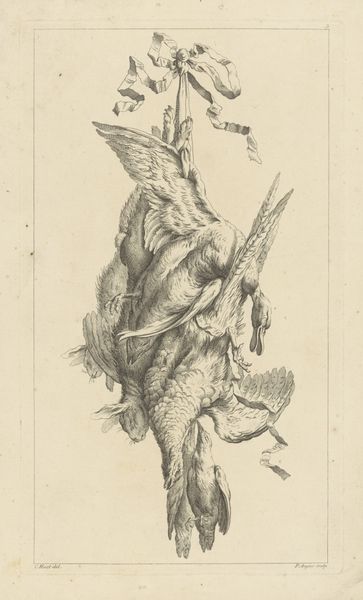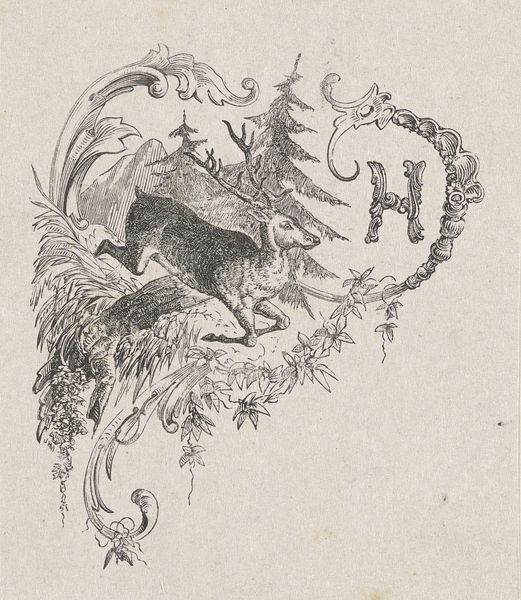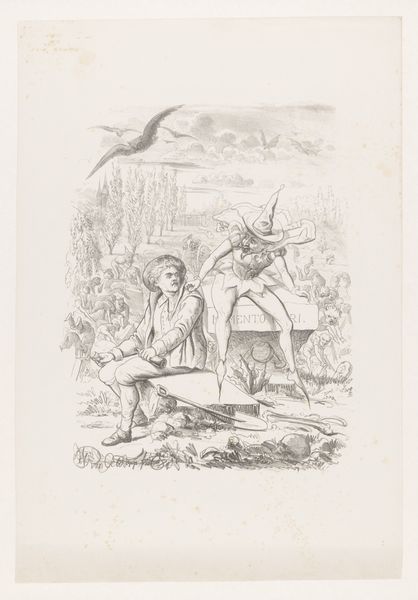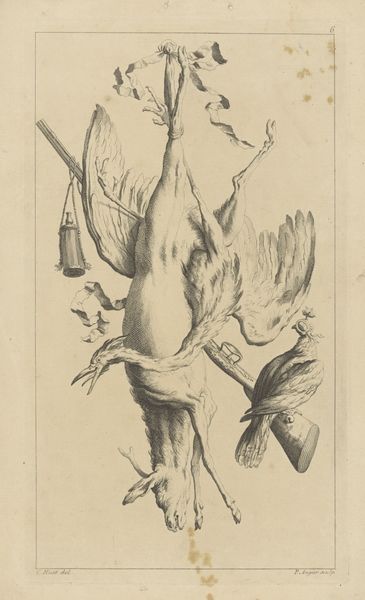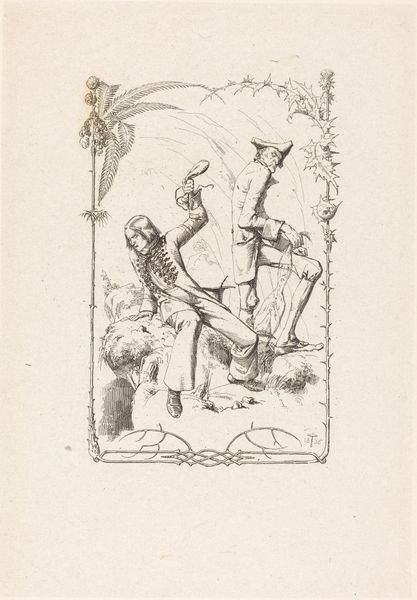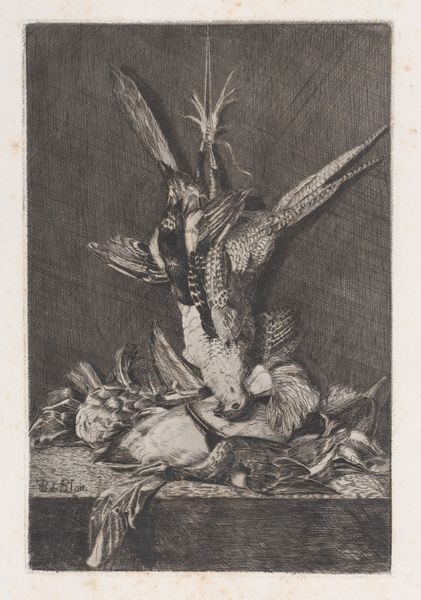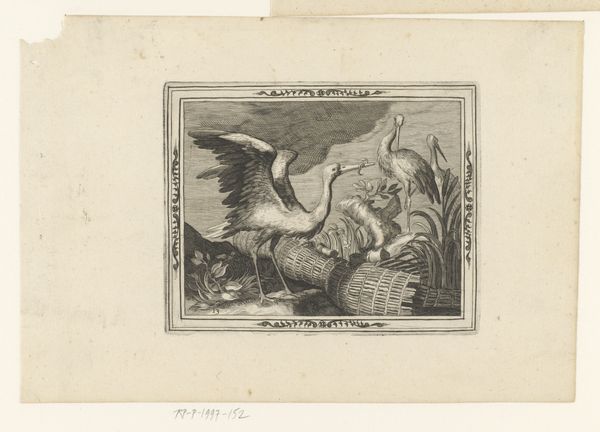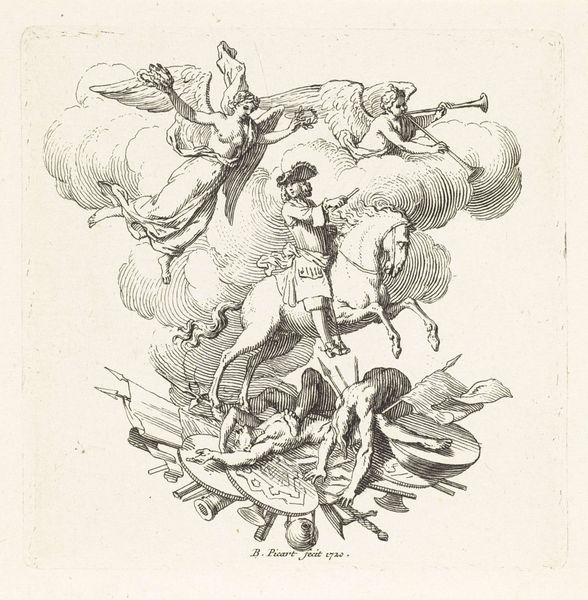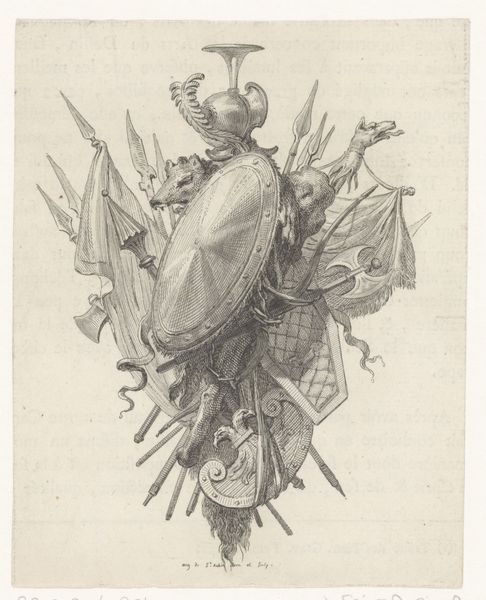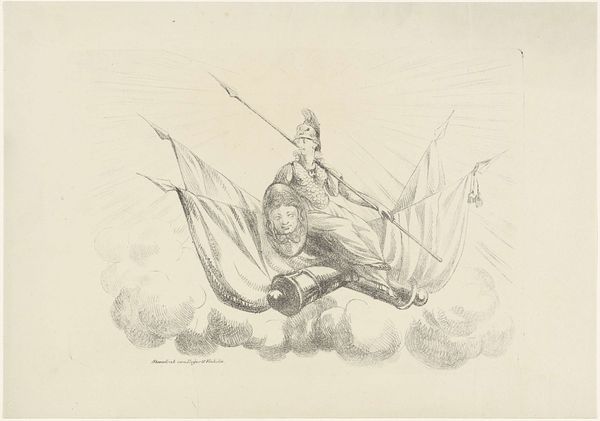
Man met een zwaard en een vaandel aangevallen door twee vogels met een kroon 1836 - 1912
0:00
0:00
isaacweissenbruch
Rijksmuseum
drawing, pen
#
drawing
#
imaginative character sketch
#
light pencil work
#
quirky sketch
#
narrative-art
#
pencil sketch
#
fantasy-art
#
figuration
#
personal sketchbook
#
idea generation sketch
#
sketchwork
#
sketchbook drawing
#
pen
#
sketchbook art
#
fantasy sketch
Dimensions: height 128 mm, width 99 mm
Copyright: Rijks Museum: Open Domain
Curator: Here at the Rijksmuseum we have an intriguing pen and ink drawing by Isaac Weissenbruch, made sometime between 1836 and 1912. It is called "Man met een zwaard en een vaandel aangevallen door twee vogels met een kroon", which translates to "Man with a sword and a banner attacked by two birds with a crown." Editor: My first impression is bewilderment tinged with sympathy. The scale of the birds relative to the man emphasizes his vulnerability. It’s all drawn with such fine lines; there's a frantic quality to the hatching and cross-hatching. Curator: It evokes for me ideas of power, particularly illegitimate power, and the fragility of established order when challenged by unexpected forces. Who are these crowned birds? What systems do they represent, and why do they attack this standard-bearer? I immediately see echoes of socio-political commentary, perhaps a satire of governance. Editor: From a material perspective, it’s fascinating to consider how such a light, almost ephemeral medium – pen on paper – could convey such a dramatic scene. I wonder what the artist was thinking about, what sketches, drawings or tools did the artist use to render that intense scene, if there any underdrawings in the composition and whether the pen that the artist use was made from wood or metal. Curator: Precisely! And I'd argue this isn’t merely a “dramatic scene”. Think of the societal norms and power dynamics involved. Weissenbruch offers a potent visual metaphor about resistance. What narratives might this work offer within the context of, say, 19th-century European power struggles? The banner, defaced perhaps, becoming a symbol of a revolution or reform movement being challenged from above by self-proclaimed authority? Editor: The act of sketching itself, rapidly capturing an idea, reflects a material process – that from raw mental conception there's physical execution that leaves traces of the hand. Looking closely, it appears he experimented with layering and shading in different directions; I suspect a highly conscious practice took place in production, the artist worked very directly from raw concept to the artwork we have now. Curator: This makes me ponder the performative aspect, which is very current in this day of age; in essence, are the crown birds and the swordsmen stuck in a performance that has very tangible political and societal consequences? The artist used quick gestures with ink which brings forth feelings of an intimate, dynamic exchange that perhaps are reminiscent of today’s social dynamic. Editor: Looking at this more, the composition seems balanced. This equilibrium suggests a stable foundation to build from and the means for the author to execute it physically seem modest, even common. Thank you for giving me food for thought. Curator: And thank you. It’s works like these that remind me how art can act as a crucible where complex ideas meet historical reality, rendered in potent form through symbolism and representation.
Comments
No comments
Be the first to comment and join the conversation on the ultimate creative platform.
